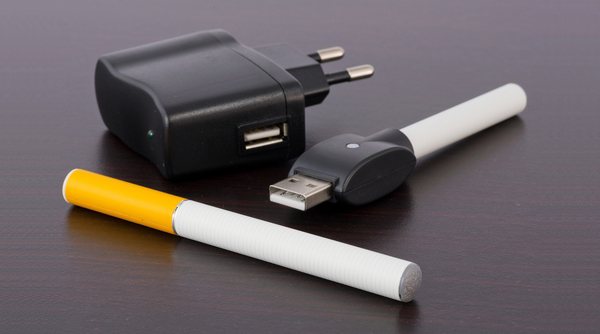A final rule which explicitly bans the use of electronic cigarettes on commercial airplanes — which applies to all scheduled flights of carriers based within and outside of the United States involving transportation within, to, and from the United States — has been implemented by the Department of Transportation of the United States.
“This final rule is important because it protects airline passengers from unwanted exposure to electronic cigarette aerosol that occurs when electronic cigarettes are used onboard airplanes,” said Anthony Foxx, who is the secretary of transportation of the United States. “The Department took a practical approach to eliminate any confusion between tobacco cigarettes and e-cigarettes by applying the same restrictions to both.”
Although further study is needed to fully understand the risks, a precautionary approach is being taken by the Department of Transportation because studies have shown that aerosol for electronic cigarettes can contain a number of harmful chemicals and affect vulnerable people — such as children, the elderly, and passengers with respiratory issues — would be exposed to the aerosol within the confined space of an airplane but without the opportunity to be able to avoid those chemicals.
This rule explicitly bans the use of electronic cigarettes in all forms — including but not limited to electronic versions of cigars, pipes, hookahs, personal vaporizers, electronic nicotine delivery systems, and devices designed to look like everyday products such as pens — but the ban does not include the use of medical devices such as nebulizers.
The ban on smoking — including electronic cigarettes — has been extended to all charter flights of airlines based within and outside of the United States where a flight attendant is a required crewmember.
Lithium-Ion Batteries a Hazard
Another reason for the ban can be linked to the issue of lithium-ion batteries — which power electronic cigarettes — igniting aboard airplanes and causing a potentially dangerous hazard to passengers and members of flight crews.
An electronic cigarette reportedly burned a small hole in a piece of checked baggage located inside of an Embraer 190 airplane operated by JetBlue Airways at Logan International Airport in Boston on Saturday, August 9, 2014, causing the evacuation of passengers from the aircraft whose destination was Buffalo. The bag was removed from the aircraft by baggage handlers, who then used a hand-held fire extinguisher to ensure that the incident did not escalate to a more serious situation.
An interim final rule was implemented effective as of Friday, November 6, 2015 by the Pipeline and Hazardous Materials Safety Administration of the Department of Transportation of the United States which prohibited passengers from carrying electronic cigarettes and similar devices in luggage and baggage being checked aboard airplanes — as well as charging those devices or their batteries.
Summary
Many airlines already prohibit the use of electronic cigarettes by passengers aboard their flights.
I am usually quite tolerable about a lot of things; but I simply cannot stand to be around traditional cigarette smoke. For some reason, I am the person to whom smokers seem to gravitate when I am outside — such as at the front of an airport terminal at curbside while waiting for a ride, for example. I never did understand that…
…but I must admit that I have never been around anyone who used electronic cigarettes. I understand that liquids which apparently come in a plethora of flavors are used to “smoke” electronic cigarettes. Blackberry, apple, spearmint, banana, raspberry, cherry, pomegranate, strawberry — those are only some of the flavors which certainly sound more aromatic than real tobacco if I had to breathe in “second-hand smoke” — but I cannot comment on that due to lack of personal experience.
Regardless, this is a victory for those passengers who might otherwise be adversely affected by the chemicals used for electronic cigarettes and similar devices — as well as slightly reducing the danger potentially caused by lithium-ion batteries aboard airplanes.
Source: United States Department of Health and Human Services.
